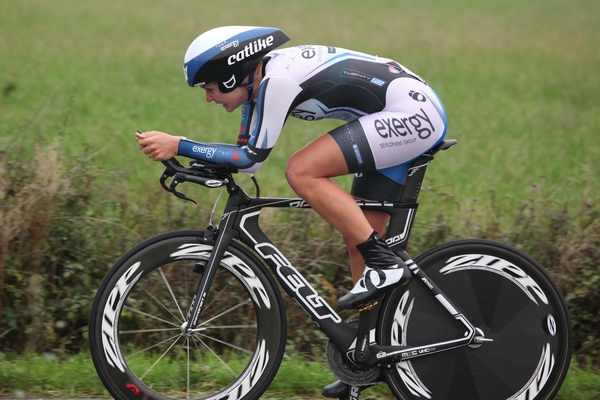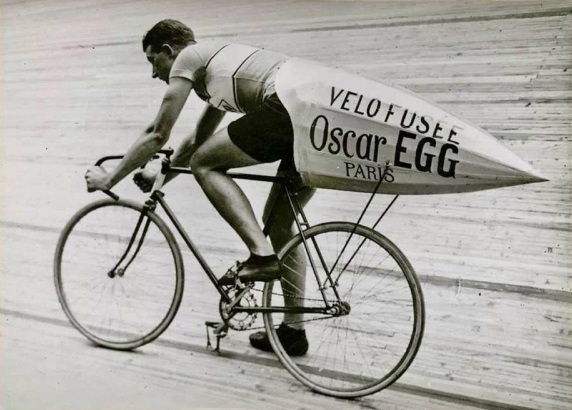
There is no doubt that being “aero” is all the rage these days, and not only among the professional elite of cycling. You’ve probably come across a couple of weekend warriors with teardrop helmets or been mesmerised by the sound of a time trial bike equipped with disc wheels approaching from behind.
It is a well-known fact that drafting behind another rider reduces your required power output by about thirty percent compared to riding out in the open, but what energy savings can you yield from having the right aero accessories? We looked at the research to figure out just how much time and energy you could be saving on the road.
1. Aerodynamic (teardrop) helmets
Most cyclists will opt for a classic road helmet and with good reason. These helmets are built to protect your precious skull and also provide plenty of ventilation to your head so you don’t overheat. They are also widely available in an affordable price range. However, these helmets are about as aerodynamic as a top hat and no good if you want to be truly aero.
One of the leading experts in aerodynamics is Specialized’s aerodynamicist (yes it’s a real title) Mark Cote. Mark and his colleagues use a special wind tunnel to control the factors that might affect aerodynamics, such as weather, wind direction, the rider’s position on the bike etc.
In 2014, Mark and his team shared the results of a wind tunnel test which compared the same cyclist on a traditional road bike setup. The scientists compared a Tarmac SL2 with standard handlebars and traditional road helmet against different combinations using clip-on handlebar extensions, a time trial helmet and switching to a time trial bike (Specialized Transition TT bike).
In an article on Bike Radar, the team revealed that the total efficiency gained between a traditional setup and the time trial bike combined with an aero helmet was about five and a half minutes over forty kilometres. Of this, the aerodynamics of the time trial helmet accounted for about forty-five to sixty seconds (or fourteen to eighteen percent of the total efficiency gain).
However, because of the shape of an aero helmet, a rider’s position on the bike and the way they hold their head can have a significant impact on the overall efficiency gains. An aero helmet is designed to allow the wind to travel across the top of the head and down the back with the least resistance possible. If the rider is moving around a lot or bending their neck to look down or to the side, they will lose a significant proportion of the efficiency gains from the helmet.
Another factor to consider before rushing out to buy yourself a new helmet is the effect of a time trial helmet on your body temperature. Unlike traditional road helmets, time trial helmets are poorly ventilated and quickly become uncomfortable in warm temperatures. On a warm day, the gains from an aero helmet can quickly be lost if your body is not able to expel excess heat.
2. Road bike vs. time trial bike
To get the maximum benefit out of a time trial helmet a cyclist needs to be sitting low on the bike. In other words, the benefit becomes significantly greater when combined with a time trial bike or a normal road bike with clip-on handlebars. The abovementioned study showed that by using the same road bike (Tarmac SL2) with clip-on aero bars, the rider would reduce their power output by 29.4 watts at an average speed of forty kilometres per hour, which translates to a time saving of about two and a half minutes over a forty-kilometre distance. As previously mentioned, the full time trial setup (TT bike + aero helmet) would shorten the forty-kilometre trip by just over five and a half minutes compared to the traditional road equipment (Tarmac SL2 + road helmet).
3. Aero disc covers
The aerodynamics crew from Specialized aren’t the only experts when it comes to aerodynamics in sports. In 2010, Aerosports Research produced a breakdown of the effects of aerodynamic equipment in cycling. Their data suggests that you can gain between 23 and 45 seconds per wheel over a 40-kilometre distance depending on the type aero wheel you choose.
The front wheel will give you a bigger aero uplift than the rear wheel. In fact, Aerosports recommend that aerodynamic rear wheels are one of the last items to add to your aero armoury. However, let’s not forget that an added benefit of rear discs is that wicked sound they make when you pass people. Just remember, disc covers only make you badass if you’re the one overtaking.
4. Shaving your legs
For the verdict on shaven vs. unshaven legs we return to Specialized’s aero specialists. In 2014, the team tested the effect of “wind on skin” on six cyclists in their controlled wind tunnel environment. They were surprised by the results: on average, the riders shaved off seventy seconds per forty kilometres by shaving their legs. For a time trial cyclist, going from hairo to aero can be the difference between a place on the podium and finishing outside the top ten.
5. Skin suits vs. traditional cycling kits
According to Aerosports Research, a tight-woven skin suit, which allows only minimal airflow through the material, can yield up to two minutes over a forty-kilometre time trial. Your body has a large surface area so it makes sense that reducing the drag created by your own flesh and blood will have relatively significant impacts on your overall speed.
6. Shoe covers
Interestingly, shoe covers have a relatively big impact on aerodynamics according to Aerosports. With a thirty-second time saving over forty kilometres, shoe covers offer one of the easiest and most cost effective ways of reducing drag.
7. Wheel and bicycle weight
The relative impact of your bike’s overall weight (including you!) is reduced substantially on flat or rolling terrain. On a flat course, about eighty percent of your power is spent on pushing through aerodynamic drag, with your body accounting for seventy-five percent of that. In other words, optimising aerodynamics will have a relatively large effect on your overall speed compared to weight.
See also: Three reasons to train with heavy wheels and tyres

In summary, it is generally possible to increase your speed and/or reduce the effort required to push you forward by using aerodynamics accessories. However, remember what matters the most: the power and stamina in your legs.
See also: 3 reasons why training with power will make you a stronger cyclist




